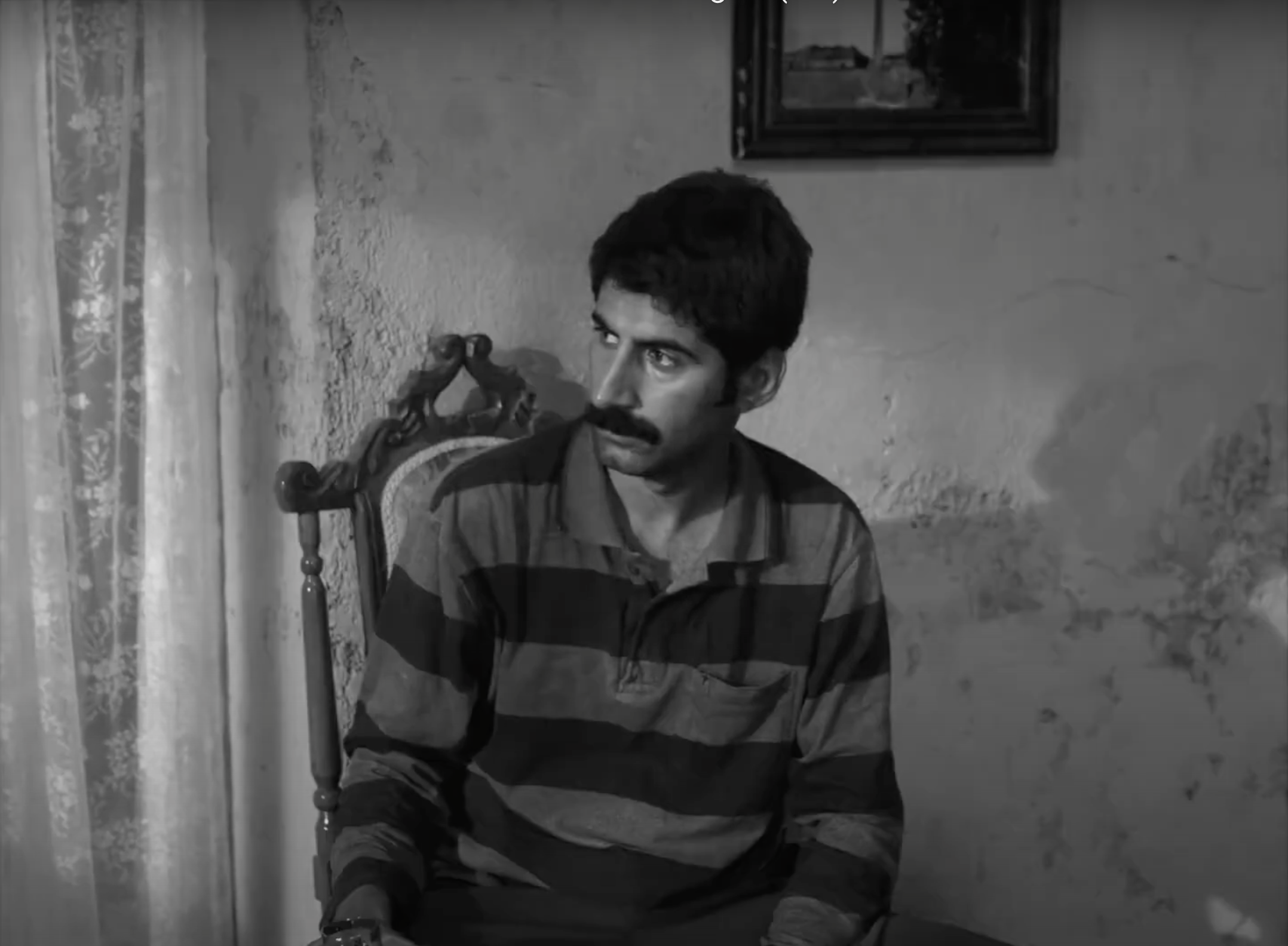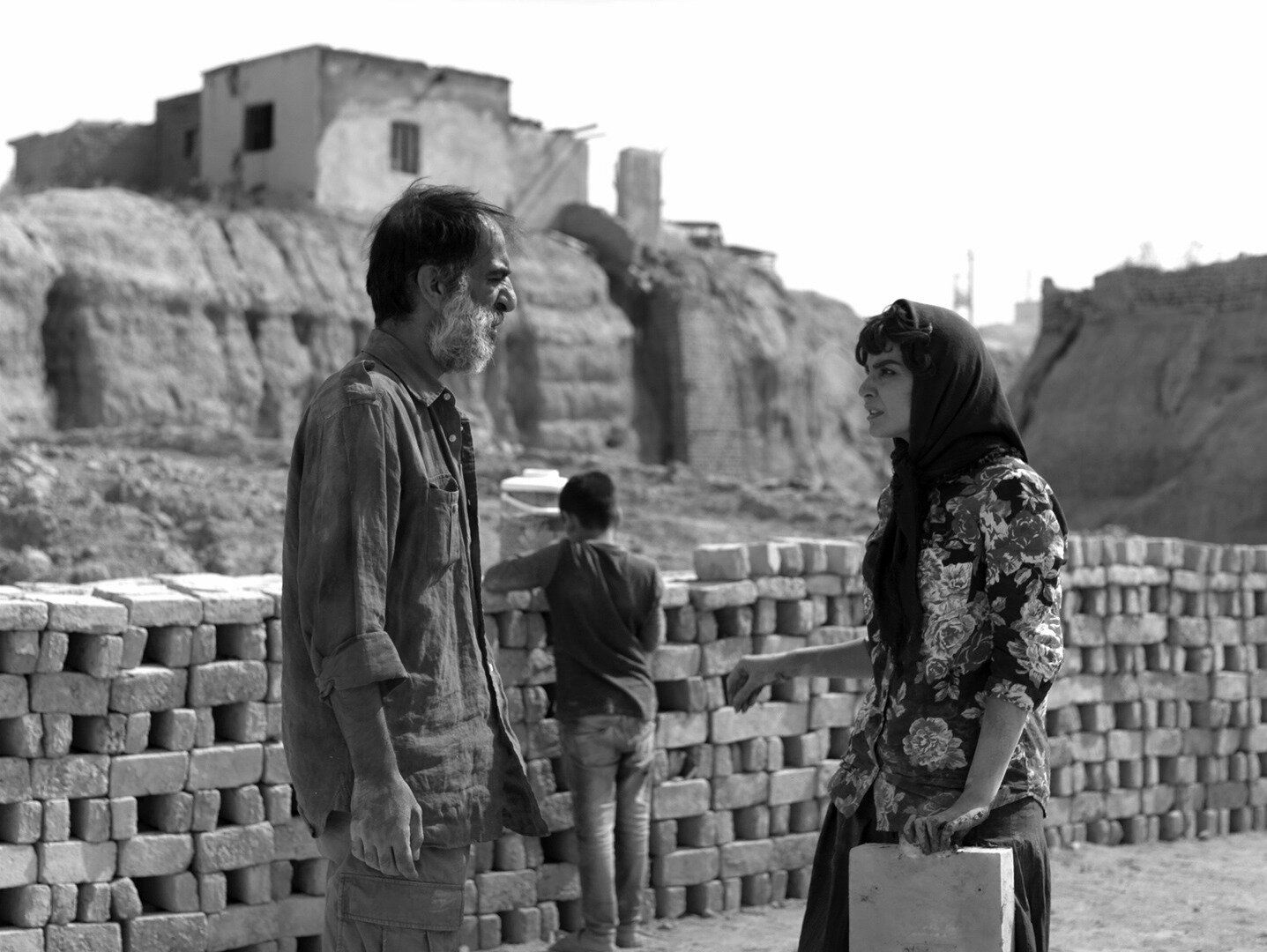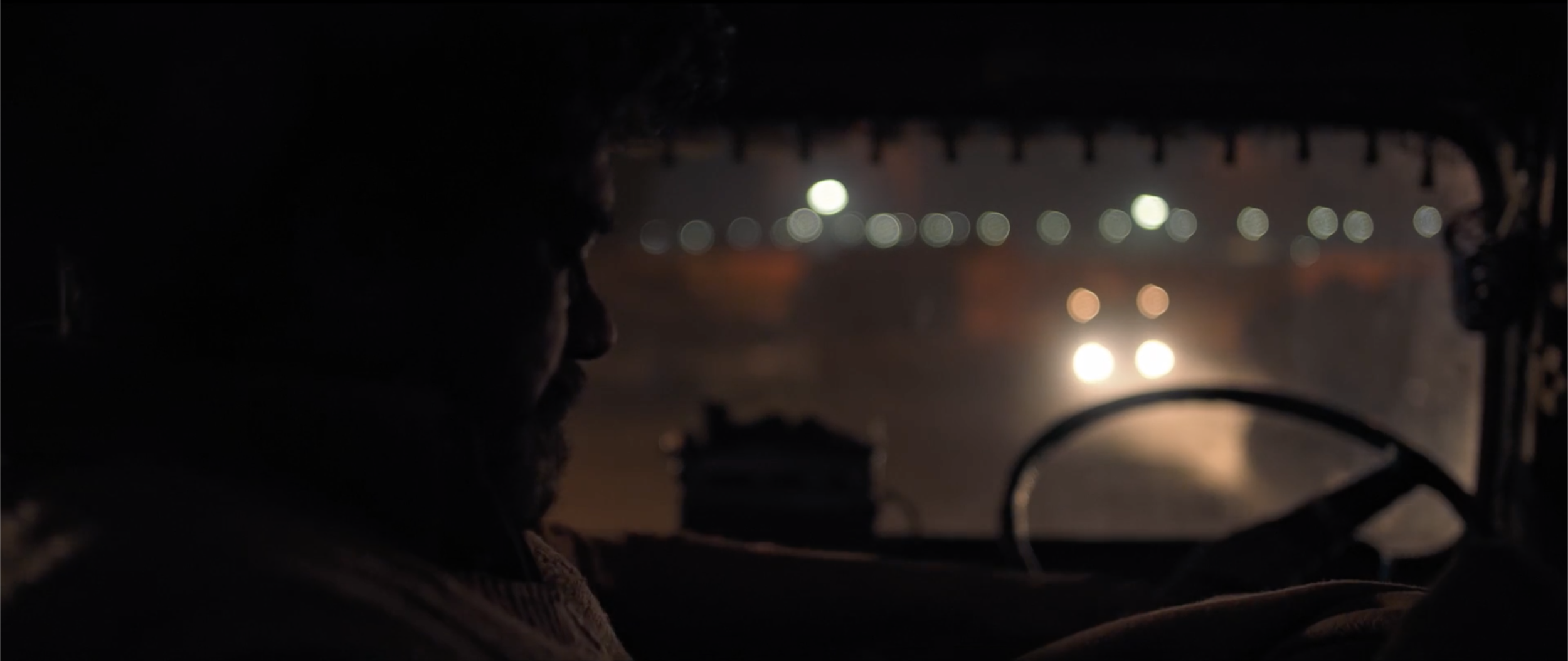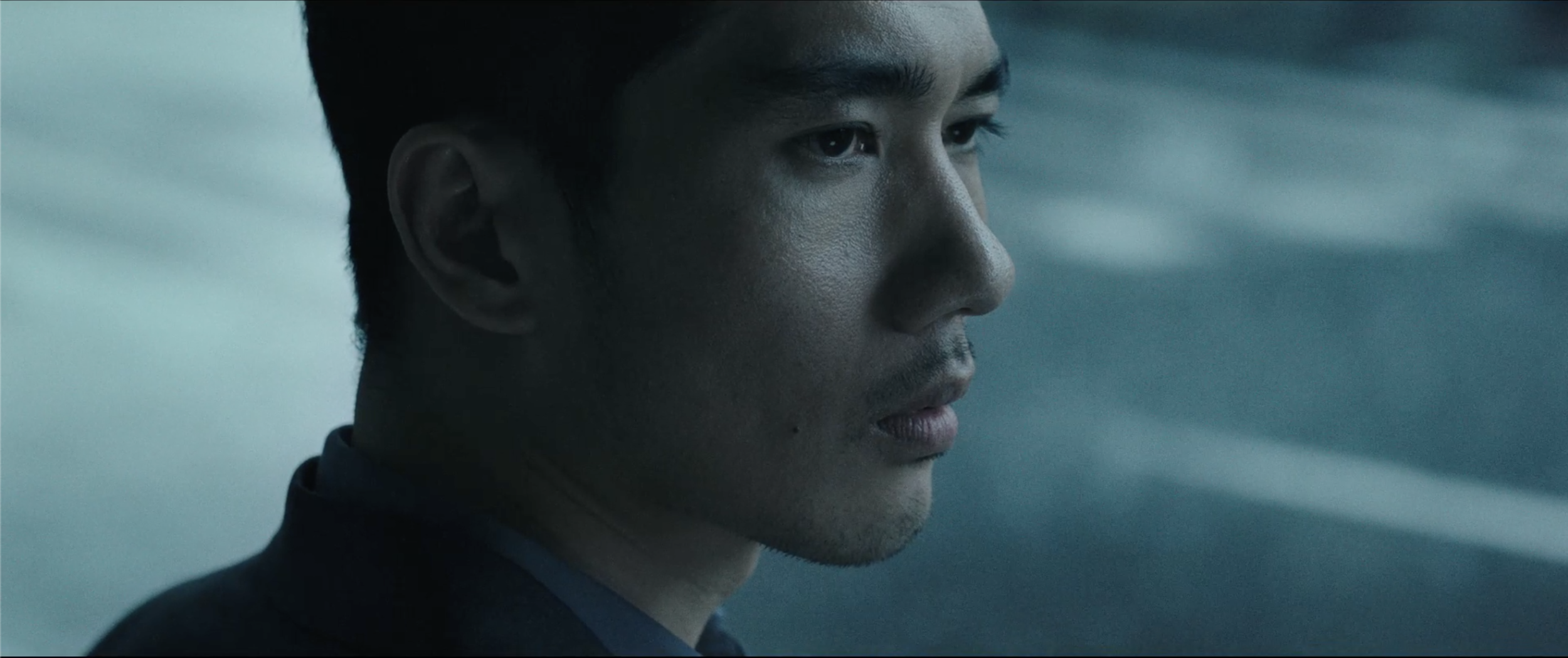The Wasteland (Dashte khamoush)
The Wasteland (Dashte khamoush)
Directed by Ahmad Bahrami
Starring: Touraj Alvand, Ali Bagheri, Majid Farhang, Mahdie Nassaj, Farrokh Nemati
Country: Iran
Year 2020
Author review: Roberto Matteucci
Click Here for Italian Version
"A woman must be half her husband's age."
The production of bricks is a very ancient job, particularly hard. The clay is picked up, moulded into the shape, dried, and cooked. The work of recovering the material is very heavy, because it is handmade. Slaves were destined for their realization. A phenomenon even mentioned in the Bible. The Jews, slaves of the Egyptians, were charged with the most degrading activity, making bricks, as Judith 5,11:
“The king of Egypt, however, rose up against them, shrewdly forced them to labor at brickmaking, oppressed and enslaved them.”
Nowadays, the conditions of the labourers have improved but making bricks is always an exhausting job for marginalized classes. Journalistic reports still speak of captivity for the workers of brick factories, both for the unhealthy environment due to pollution, and the heat, and the plague air, and the tremendous fatigue.
In Cambodia, brick workers are used, both parents and sons, to pay off debts:
“... holistic approach is needed to break the cycle of debt bondage, in which parents take up loans from factory owners to pay back previous debt and then pass on their debt through generations.” (1)
In Bangladesh are employed both migrants and children:
“Migrant labourers, mainly from areas in northern Bangladesh such as Khulan, Bagerhat, Shatkhira, and Jessore work in kilns around cities while local labourers are employed in rural areas.
There is a prevalence of child labour. … children were found to have started working in brick kilns between the ages of 8 and 10 years.” (2)
In India, loan sharks force brick workers to work until they are paid:
“The work is hard standing in the water, lifting the bricks. We make 1,500 bricks a day. Only after six months will we get released. They work 12 to 18 hours a day, pregnant women, children, adolescent girls... " (3)
In Nepal, it is a job for the marginalized, who have contracted debts without the possibility of repay them:
“Brick workers in Nepal are the most marginalized of the unskilled workers, often bonded by debt and forced to work for insufficient wages. The brick industries employ migrant and seasonal laborers who have no link to local government or representation by workers’ associations and are situated mostly in suburban areas. ... The laborers of the kiln are mostly from the agricultural sector ... Four main activites take place in the brick factory. These are: preparing mud and laying brick, barrying raw bricks to kiln, working inside the chimney and carrying out cooked brick. Work inside the chimney includes spreading rubbish over the brick, firing the furnace, controlling the fire and flame and clearing the hole. Human laborers carry the baked brick.” (4)
In Pakistan, the workers in brick factories are the poorest, people with many debts. They come especially from the Hindu and Christian minorities. Often their fate is death:
“It is double, terrible, discrimination. It hits religious minorities - Christian and Hindu - and the poorest sections of the Pakistani population. It involves an "army" of 2.3 million people. They are the "debt slaves" … They start with a loan or an advance from the boss. Repaying it takes on average two years, during which time they are in a servile condition. Without rights, without certainties, without salary, forced to work exhausting for many hours, living in dilapidated homes. In many cases, the worker fails to repay the debt incurred. Thus begins an ordeal that often ends only with death." (5)
The animals in the factories share the existence of men. Their condition is also hideous and dangerous:
“In traditional kilns, bricks are made by hand and then transported by donkeys, mules and horses. They carry many tonnes of bricks daily in packs or carts within the kilns, and to external locations, for use in the construction industry. These animals suffer from poor nutrition and other serious health and welfare issues caused by their working environment, as well as by poor husbandry and management. Extreme temperatures; lack of shade, water and rest; difficult terrain and overloading cause disease and injuries. Services, including healthcare, are scarce and labour abuses are commonplace, including low wages, child labour and bonded labour. Brick kilns are also extremely polluting to air and water, which in turns causes infection and respiratory diseases in humans and animals.” (6)
In Iran, the context is similar. Brick factory workers are immigrants from the most depressed areas of the country:
“Workers that work with their families with simple jobs in these factories are mainly from the country’s poor provinces such as Khorasan, Kurdistan and … that move to Tehran to work as seasonal brick factory workers ...” (7)
They are paid shamefully; it is the category with the lowest wages:
“30,000 brick factory workers are among the country’s most deprived workers.” (7)
They are closed, with their family, including minors, inside the furnaces and obligated to work painfully:
“Due to the increase in production and increased revenue, the workers’ families all work together to bring in more income and therefore, the children of these families work in these brick factories at very young ages along with mothers and fathers ...” (7)
The newspapers still use the term "slave" to depict the miserable, terrible, pitiful situation of the employees of the furnaces.
The life of some families of workers in a furnace, in the Iranian desert, is narrated by the Iranian director Ahmad Bahrami. They are the symbol of the exploited workers in the world. The Wasteland - Dashte khamoush won the Orizzonti Award for Best Film at the 77th Venice Film Festival.
In the desert of Iran, roughly an inland area near the borders of Turkmenistan and Afghanistan, there is a brick factory. Production is still handmade. They recover the clay, shape the bricks, put them in the ovens. Some families are employed, men, women, elderly, children. They are of disparate nationalities, they are in the worst poverty, they work many hours a day without rest. Managing different families is not easy. Keeping them together, resolving the discords is Lotfollah, a supervisor, a mediator. His main task is to mediate between the workers and the boss, with whom he tries to explain and support the numerous needs.
The film has a repetitive, circular structure, the director points out:
"We have The Tales of A Thousand and One Nights, in which the story repeats itself. The story is repeated as a circle. People like the circle because the stories repeat themselves and then gradually come out one by one." (8)
In the film, a scene is repeated five times, with the same number of households. Only the requests and phrases are different.
The workers ask for loans from the owner, who responds with a polite denial. The workers are subjugated.
The plant has an inexorable destiny: to close down. The owner sells the land and orders everyone to leave, promising to pay them later, but undoubtedly it is another lie. For Lotfollah, born in the factory, that furnace embodies his world. Outside, he has no life, no future, no hope. In reality, Lotfollah had a dream, a charming woman, Sarvar. She, too, works in the factory and is the boss's lover. The illusion vanishes, and he has only one solution: using the bricks to build his tomb.
The topics narrated, with formal style, are unmistakable.
The first theme is Iran, the Middle East, and the many ethnic groups of which they are composed. Then there is the merely emblematic story of workers without protection, in lousy conditions, with meager wages. Economic, social, human poverty provokes a sacrifice. The useless sacrifice of people condemned to eternal misery, and with them their children. In the middle, there is the supervisor, who constantly tries to find clarifications, compromises.
The history of Iran is more cultural than military; it is the history of an exemplary nation:
"... developed a strong sense of identity and loyalty based on the Shiite faith, on the Persian culture and language, and the ancient land rich in the history of Iran." (9)
The 1979 revolution was wanted by the population, eager for a radical renewal. Later, many reasons disappeared, both dues to the bloody war with Iraq and the lack of economic development.
Ahmad Bahrami is aware of both his country's cultural virtues and flaws, so he utilizes Iran as an allegory. In Iran, people do not speak directly, so it is obvious to use metaphors and symbolisms, therefore the brick factory is Iran:
“It’s difficult to be straight forward in Iran, so we chose metaphor as a visual cue. Especially because we wanted to use a metaphor for day-to-day life, we chose this particular location and the repetitive brick-making business.” (10)
Iran is an integral part of a beautiful, antique, civilise, advanced, and rich, Middle East. Some states have had exaggerated wealth from oil. It appears that the inhabitants have luxurious houses with gold bath accessories. The reality is diverse. The allegory is oil and the incapable of management. The effect is the creation of an immense disparity. Therefore, the Iran oil fields do not help the population, large segments are reduced to living in circumstances similar to those described in the Bible. The filmmaker's idea:
“If I had to pinpoint it, I would say that this is a story of the Middle East where everyone is working for the “black gold”, which is oil. The factory can be taken to be a representation of the oil industry especially as it relies solely on oil and gas. And this leads to the idea that the Middle East may be super-wealthy because of oil but none of its (ordinary) people are able to use this wealth.” (11)
There is misery, there is class conflict. Their existence is disgusting, both for very low wages and for bad safety. The author has a Marxist conception, the proletarians of the whole world should unite. Life in the furnace is the symbol of an international condition. Since 1848, the date of publication of The Communist Manifesto, many fundamental behaviours have changed, but enormous, and ruthless exploitation remain of some workers. The newest slaves, like the recent gig-economy jobs, and old slaves, as brick workers are still enslaved to the limit of survival:
"But, in order to oppress a class, one must also assure it of the conditions within which it is allowed to live at least the miserable life of slaves." (12)
Ahmad Bahrami confirms the profound universal breath of his hypothesis:
“The story of the film referred to the Iranian workers, although what happens in the film could happen to any worker, anywhere, in any part of the world. The difficulties of the workers and the challenges with their respective bosses do not exist just in Iran, so the story of this film can be considered the real life for all workers in the world." (13)
All personalities have the same characteristic, they participate in social construction while being invisible, out of time.
Lotfollah is a prisoner in the factory. He is the personification of an oxymoron because he is a free prisoner. Therefore he has no alternative, he would not know where to go. He is forty years old but declares he has more to get a pension. In his squalor life, he has a secret love, Sarvar. She, too, lives and works, with her son, in the furnace. Lotfollah is the supervisor of the workers and the property. Everyone trusts him. The figure of the mediator for the director is important, historical, traditionally valid for the Middle East, a codified presence:
"The figure of this custodian, we in the Middle East do not dare to speak directly with who is in command, we always need an intermediary ... who brings the word to the boss, just to tell the whole story." (14)
Everyone considers him faithful, with an ardent sense of duty. He is accepted for his meekness and shyness. He is strong, not physically, but as a catalyst for all the problems.
Melancholic, modest, humble, saturnine, he is a perfect protagonist for the factory and its minimalist setting. He has at heart the fate of anyone, of the boss, colleagues and, above all, of Sarvar. In the end, he will make a religious gesture, a gesture of rebellion for the losers of history: he will be the martyr of all.
Even the existence of the boss does not appear better:
“Neither the workers nor the boss, are in a good situation and life are not easy for any of them. They seem trapped in a social and historical condition. There is no real person responsible for all conflicts; both the boss and the workers themselves have their own interests.” (15)
The difference is congenital, the boss is a chronic liar. He lies to Lotfollah and indirectly to the workers: "When the boss has money?”
He is generous with words, promises money, boasts of friendships, non-existent help. He is a prisoner in the factory; he behaves like an infamous, full of falsehoods. He is Lotfollah's counterbalance: haughty, ungrateful, morally corrupt. He is lascivious in his relationship with Sarvar, as he is married and does not care about her. He is selfish because he does not hesitate to sell the plant without caring about the workers and their families. They have to depart by dawn, including Lotfollah, and he continues to deceive them promising them to pay arrears quickly.
The other characters are the community in the furnace. They describe different humanity and ethnic groups: the communist Kurds or love stories hindered by the father. They are divided, they argue, they are in the rooms, but they perform all the same movements, the same rituals as tea poured into the saucer with sugar in their mouths.
In the morning, everyone leaves discouraged, looking for a better place, but they will surely find another desperate work. Their life is in just some clothes in a bundle. Their life is a circle, it will repeat itself.
In the beginning, there is the sound of a cart, carrying ice in the hot desert. The camera is fixed, he rises, there is Lotfollah. He is driving a cart with a horse. Long-shot, there is a brick factory.
The director follows the same style. The repetitions of the scenes have elements in common, the subjects are disparate, the boss declaims the same speech. The workers, concentrated on thinking about their problems, are filmed from different points of view.
The sequences are a circle. On the contrary, the camera perennially tracks sideways even if there is an obstacle. The barrier is often a brick wall. The dolly shots the characters, disinterested in the life in front of it. Ahmad Bahrami wants to maintain detachment and coolness towards events. The camera holds a calm, imperturbable tone, he does not want to influence their lives. It goes on track despite both physical and human barriers and despite the conflicting emotions born in that Iranian microcosm:
“… Look at the location of our story. It is a place that produces bricks: they all have the same shape and are made of the same material. Or the same dialogues, which are around a pivot and are repeated, trying to reiterate the same main question. This repetitiveness is even in the choreography of the camera, in which the camera starts from a point and ends by returning to the same point. I think the repetitive form and structure can better represent the alienation and the sense of boredom of those workers in daily life." (16)
The plan-sequence has meaning. It is the continuation of an allegedly neutral, impartial style. The plan-sequence films normal time and marks the seconds and minutes of life, consequently, it is closer to the feeling of realism:
"Shots in plan-sequence involves some important aspects: first, plan-sequence gives a greater sense of realism; then, the acting is more credible because there is no cut of the action; so, the time of real life events coincides with the time of film events. Ultimately, the plan-sequence is closer to life than is usually done on a cinematic level, and the screening film looks much more like real life.” (17)
There is an unknown factor, the black and white, used by the director. Life is not black and white. For the author, it has the same connotation as the fixed camera, the trolley, the textures of the bricks. Black and white do not belong to reality, life is multicoloured. However, colour could imbue the story with too much joy, and life in the factory has nothing cheerful, colour must be banned:
“… I decided to make a black and white film because I believe that there is no colour in their lives. And nevertheless, on a formal and structural level, creating harmony between two colours is much better than creating it among many colours, and more pleasant." (18)
The Wasteland has a poetic and also political atmosphere. The last is the predominant aim of Ahmad Bahrami. The film, while presuming to be realistic, does not tell a real story, it is a parody of the life of brick workers. Good and evil hide in black and white. In the end, only Lotfollah will have a true ethical function, he will be a martyr, a true martyr.
(1) https://www.voanews.com/east-asia-pacific/100s-children-cambodia-work-brick-factories-report-finds
(3) https://www.bbc.com/news/world-asia-india-25556965
(4) https://www.ncbi.nlm.nih.gov/pmc/articles/PMC6748303/
(5) https://www.avvenire.it/mondo/pagine/pakistan-nuovi-schiavi-nelle-fornaci-di-mattoni translated by author
(6) https://www.thebrooke.org/our-work/exploitative-industries/brick-kilns-a-hidden-industry
(7) https://irannewsupdate.com/news/economy/tehran-15-hours-of-work-for-brick-factory-laborers/iran
(8) https://www.youtube.com/watch?v=wGVPIxdjST4 translated by author
(9) Bernard Lewis, La costruzione del Medio Oriente, Laterza, Bari, Seconda edizione Economica Laterza, 2011. Translated by the author
(10) https://www.goldenglobes.com/articles/wasteland-iran-interview-ahmad-bahrami
(11) https://www.goldenglobes.com/articles/wasteland-iran-interview-ahmad-bahrami
(12) Karl Marx, Friedrich Engels, Manifesto del Partito Comunista, Mursia, Milano, pag. 45
(13) https://www.infooggi.it/articolo/intervista-ad-ahmad-bahrami-vincitore-di-orizzonti-venezia77-wasteland/123526 translated by the author
(14) https://www.youtube.com/watch?v=wGVPIxdjST4 translated by the author
(15) https://www.infooggi.it/articolo/intervista-ad-ahmad-bahrami-vincitore-di-orizzonti-venezia77-wasteland/123526 translated by the author
(16) https://www.infooggi.it/articolo/intervista-ad-ahmad-bahrami-vincitore-di-orizzonti-venezia77-wasteland/123526 translated by the auto
(17) https://www.infooggi.it/articolo/intervista-ad-ahmad-bahrami-vincitore-di-orizzonti-venezia77-wasteland/123526 translated by the author
(18) https://www.infooggi.it/articolo/intervista-ad-ahmad-bahrami-vincitore-di-orizzonti-venezia77-wasteland/123526 translated by the author



















Directed: Roger Michell
Starring: Helen Mirren, Jim Broadbent, Matthew Goode
Country: UK
Year 2020